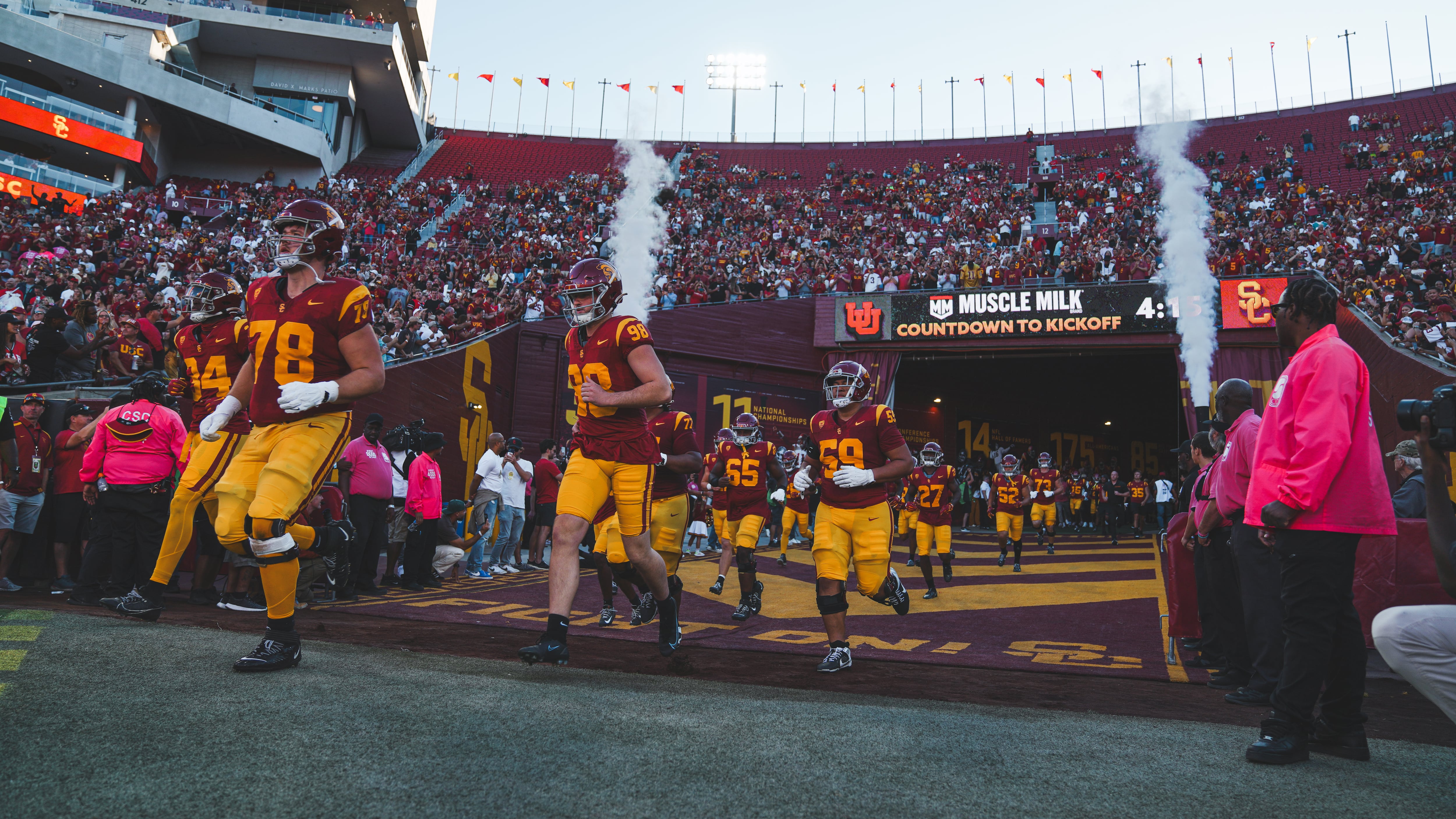“Shout” is a column by Matthew Andrade about college football.
Minutes before No. 18 USC took on No. 14 Utah, I took a long look around the Coliseum.
All around, it was a sea of red — not because of Trojan fans or even Ute fans, but from the clusters of empty seats throughout the stadium.
It was looking like the Coliseum was going to struggle to get to 60% capacity, although as the first quarter went on, fans trickled in and the attendance looked much more respectable. Still, for a matchup between top-25 teams, it’s puzzling why USC can’t pack the stands.
USC has had this issue for a while now. It’s so difficult to get fans to show up to the Coliseum that Pete Carroll said filling the Coliseum week in and week out was one of the things he was most proud of during his time as the Trojans head coach.
More recently, from 2015 through the 2019 season, USC ranked seventh in the Pac-12 in percentage of stadium capacity filled per week. Granted, the Trojans weren’t meeting their championship expectations during that period of time, but under Lincoln Riley, the attendance still isn’t hitting the marks it made when Carroll was in charge.
Although USC fans may not want to admit it, part of the reason for disappointing attendance is the Coliseum itself. It has a rich history, but it feels old and antiquated despite the renovations it’s undertaken in recent years. Some have called it the “Mausoleum” for how sound evaporates out of the stadium instead of bouncing back onto the field.
With the state-of-the-art SoFi Stadium in town and the Clippers investing 1.2 billion dollars into their new arena, reportedly set to feature the largest ever double-sided halo video board, it’s not hard to understand why fans aren’t as enthused to see games at the Coliseum. It fits the Trojan theme to a T, but it doesn’t have the glitz and glamor Angelenos come to expect.
Of course, the Coliseum can’t be the only thing to blame. The product on the field over the past decade is probably the most likely culprit. However, how do stadiums in small college towns continue to sell out even when their team is much worse than the Trojans?
The theory a lot of people run with is that there’s nothing else to do in those college towns while the teams in major metropolitan areas have to compete with a host of different entertainment options.
An issue with this theory is that it fails to recognize that the major metropolitan areas have more people and therefore, even with more options, stadiums should still have respectable attendance. Let’s take a look at Nebraska football, for example. Its stadium has a capacity of approximately 85,000. That’s 29% of Lincoln, Nebraska’s population, per the 2020 census. The Coliseum only needs 2% of Los Angeles’ population to fill the Coliseum. Nebraska’s task should be a lot taller.
The theory also doesn’t acknowledge that people make their way to these college towns from all over. It’s not just the people who live in these college towns, where there’s supposedly “nothing to do,” who show up to these games. I know this from driving over two hours multiple times a year growing up to see Oregon at Autzen Stadium.
It’s hard to put a finger on exactly why the Coliseum and Rose Bowl can’t get fans to show up even when the teams are putting on a spectacle. But I’ll throw out an idea: there are fewer passionate fans.
I’m not talking about the die-hard USC fans on Twitter or the season-ticket holders who wouldn’t sell their seats if their life depended on it. Those Trojan fans do exist and they’ve got plenty of passion, to their credit. However, it feels like there just isn’t enough passion to go around. Whether that’s due to a decade-plus of apathy and disappointment with the program or other reasons, it’s still unlike how it feels in many college towns.
This is one of the many reasons why Riley’s decision not to have players speak to the media following the loss to Utah is detrimental to the program. It prevents fans from being able to connect with the humans in the pads. How can you create a passionate fan base if the fans know next to nothing about the athletes they’re cheering for?
The attendance issue is a hard one to solve. USC has tried several things to increase engagement including hiring a DJ and putting on drone shows during halftime. The student section has shown up, but the so-called “sidewalk fans” haven’t caught on yet. Maybe a few more consecutive years of national title contention can make the Coliseum the “Mecca of college football,” as Riley pronounced it during his introductory press conference.
Or maybe this is an issue that will become even more exaggerated when the Trojans join the Big Ten and teams with no connection to the West Coast come to town. Time will tell.
“Shout” runs every Tuesday.
